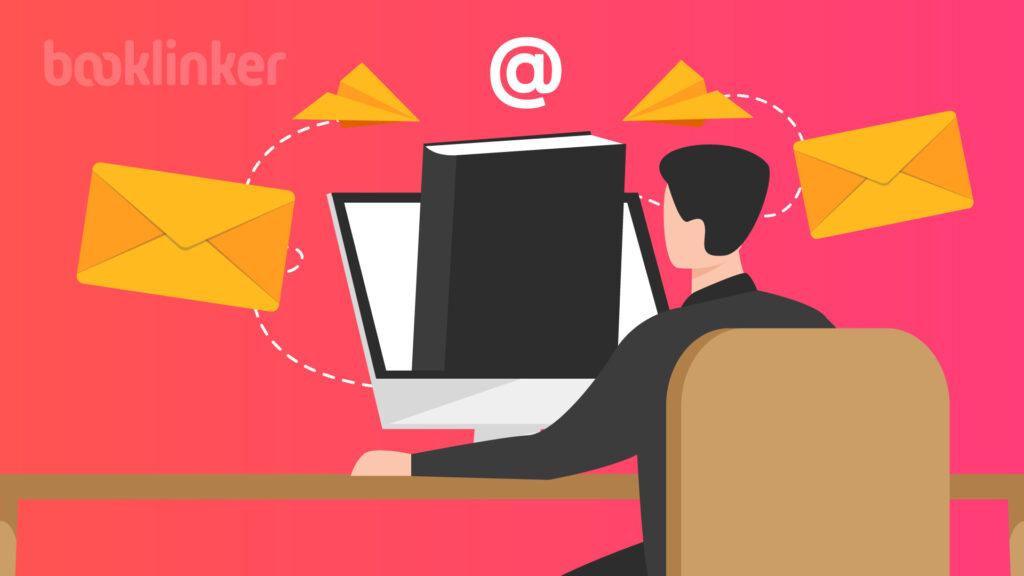
Email lists are the foundation of any successful indie author’s book marketing strategy.
They allow authors to communicate with their most dedicated fans outside the control of social media algorithms.
At the click of a button, you can notify your audience of new book launches, products, or even just how your day is going.
For a variety of reasons, many authors tend to put off creating their list, as they’re unsure how to go about the process.
That’s why we asked Nick Thacker, a USA Today bestselling author, and founder of AuthorEmail.com, to create the ultimate guide on email marketing for authors.
Without further ado, let’s jump right into it!
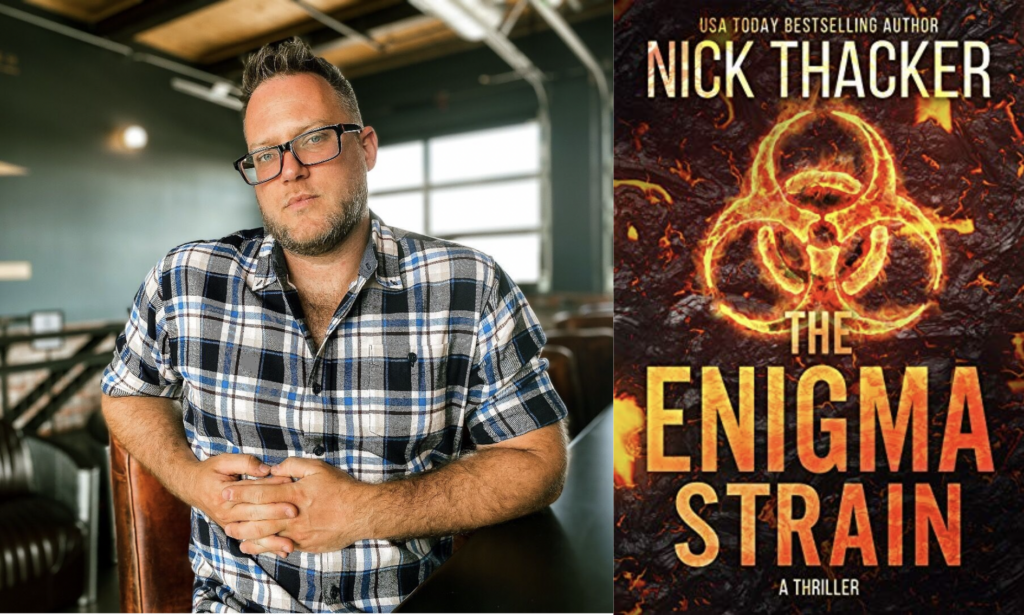
Table of Contents

Key Takeaways
- Essential Tool for Author Engagement: Email marketing is crucial for authors as it provides a direct and personal way to communicate with readers, bypassing social media algorithms.
- High Return on Investment: Email marketing offers one of the highest returns on investment among book marketing channels. It’s cost-effective, with the only significant expense being the email service provider.
- Effective Strategies and Metrics: To successfully implement email marketing, authors should focus on capturing emails through engaging content and lead magnets. Understanding and optimizing key metrics like open rate, click-through rate, and conversion rate is vital.
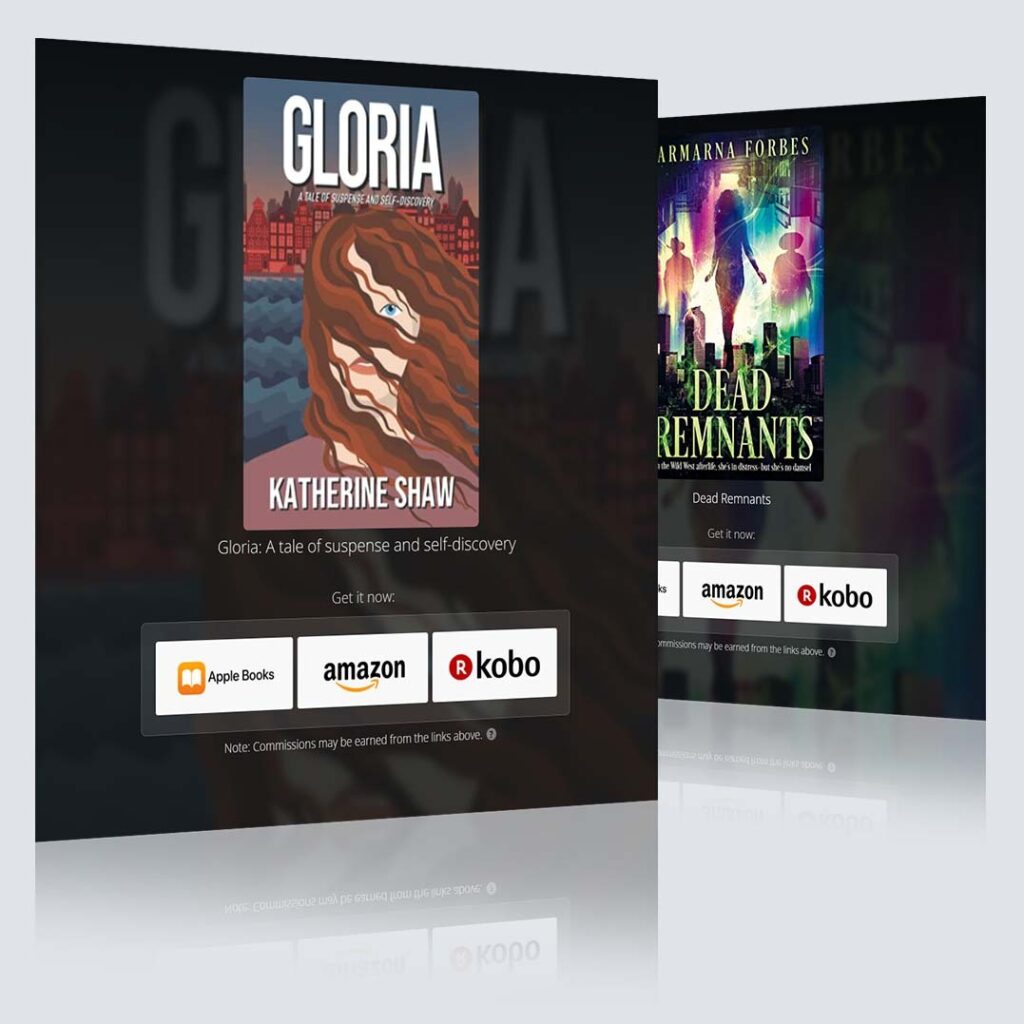
Free Universal Book Links
- Boost international sales by geotargeting readers
- Book store links update automatically based on availability
- Advanced marketing analytics
- Increase clicks with trusted links
Why Authors Need an Email List
There are countless reasons why every author should have an email list.
I’ll cover a few of them in depth below.
Part of Your Author Platform
The first reason why every author should have an email list is that it’s one of the key components of an author platform.
In this digital age, creators are competing for their audience’s attention at all moments. If it’s not you capturing their attention, it will be someone else.
Tip!
- Pillar of Your Author Platform: By incorporating an email list into your book marketing strategy, you have another channel to keep you on top of your audience’s mind.
Everyone uses Email
The second reason why all authors need an email list is due to the fact that while not everyone is going to be on a given social media platform, everyone is on email.
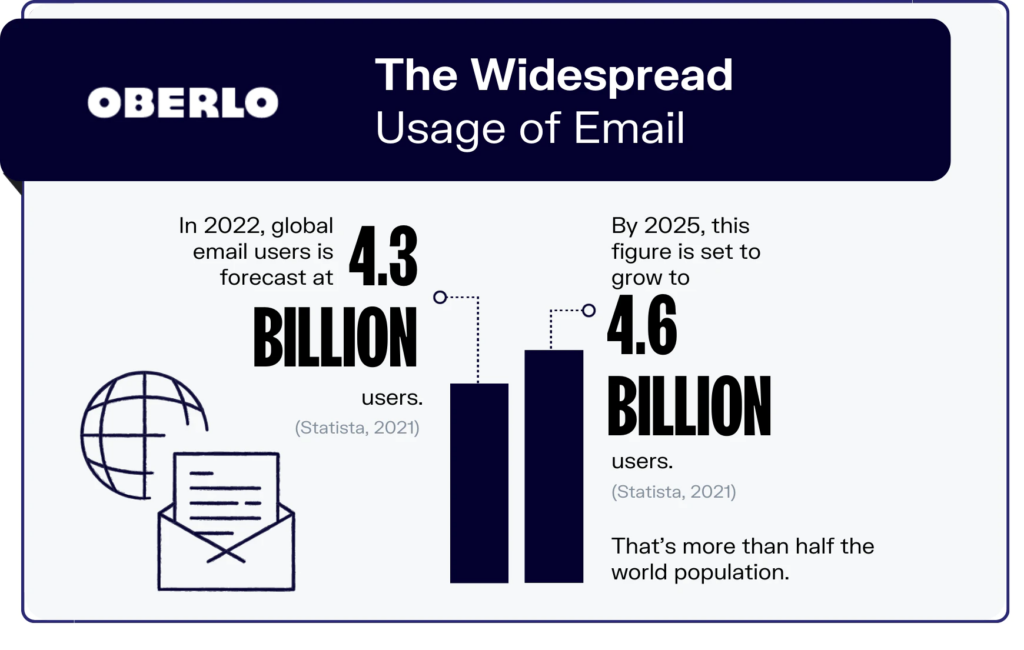
Regardless of their demographics, your fans will have an email address.
Social media sites change all the time, but email has staying power.
It’s been around since the beginning of the internet, and it’s going to be around tomorrow, next week, and next year.
It’s the best way to keep your readers personally updated!
Resistant to Algorithm Changes
Email marketing is also extremely resistant to changes in algorithms. As marketers, we hear time and time again about changes a social media platform makes to its algorithm that drops traffic.
For example, most recently, Twitter removed outgoing links to certain social media platforms. Facebook has reduced the visibility of pages and groups time and time again.
Even worse, social media platforms come and go.
Think of platforms like MySpace or Vine.
If you only had your followers there, you’d lose all contact with them when the platform dies.
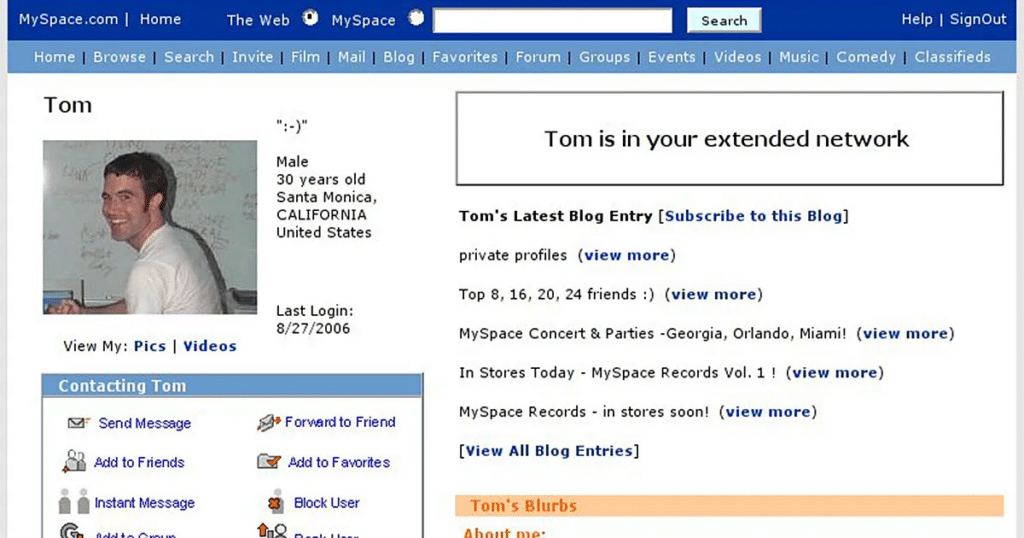
What if your audience outgrows a platform such as Snapchat?
Or your platform of choice gets banned in a country (looking at you Tiktok).
With Email, you have nothing to worry about, unless your audience unsubscribes from your list.
Writing Comes Naturally
The next reason every author should have an email list is that outside of blogging, it’s likely the closest skill to what authors are already good at, which is writing.
This type of communication is key to building a bond between you and your readers.
Email is a High ROI Marketing Channel
Lastly, all authors should have an email list as email marketing is one of the highest ROI book marketing channels you can take advantage of.
Outside of the small marginal cost of an email marketing service, there aren’t many other costs associated with the channel. According to Litmus, the channel returns an average of $36 for every $1 spent on it, not bad at all!
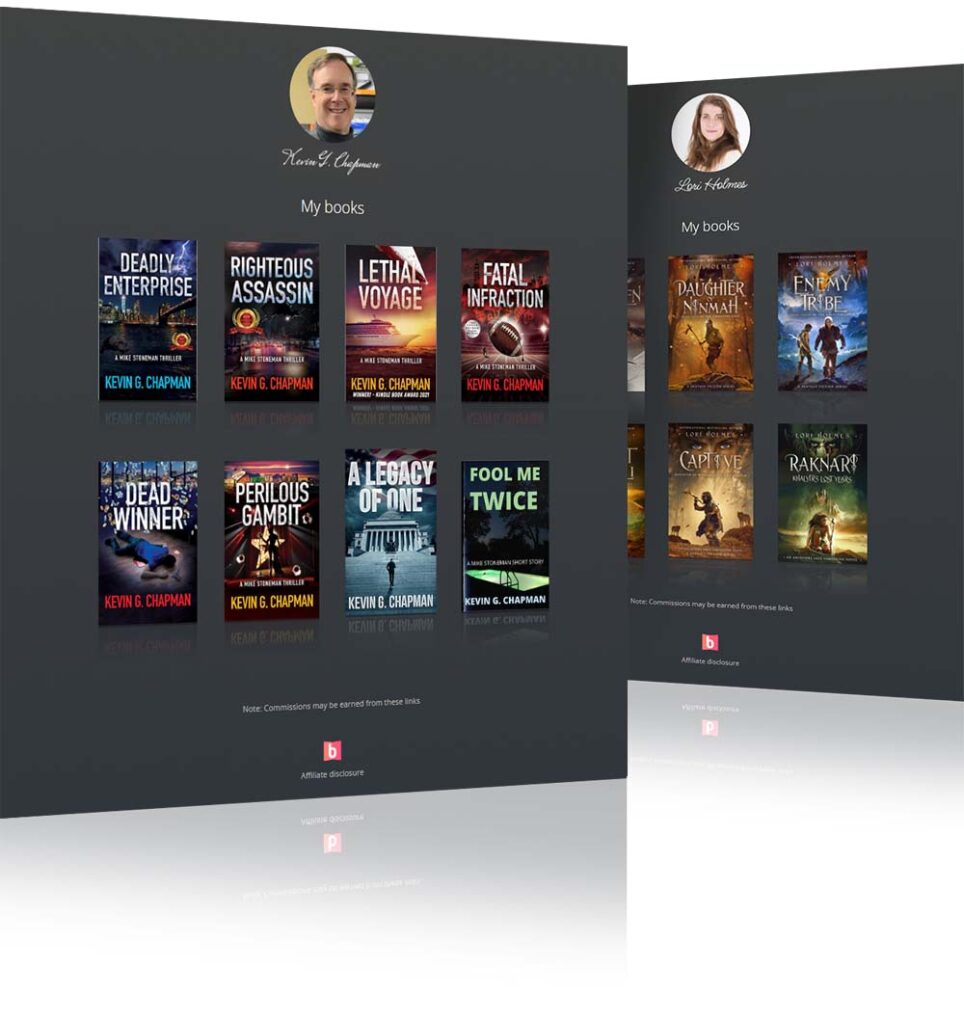
Introducing:
Booklinker Collections
One landing page for all your books. 100% free.
One link for easy sharing of your books across your backmatter, websites, emails, and social media.
How to Get Started with Email Marketing
Now that you understand the value of email marketing for authors, the next logical question is:
When should I get started?
The answer is that there isn’t really a bad time.
The quicker you get started, the more emails you’re going to capture.
You might even be able to start before you even begin writing your first book.
In my case, I was trying to build an audience around “life hacking” similar to Tim Ferris and started posting on his blog.
He had no idea that he was going to publish a book at that point, but what he did know was that his fans enjoyed the content he was putting out, and he’d be able to sell to them at some point in the future.
How to Pick an Email Marketing Provider
An important decision authors need to make at the start of their email marketing journey is which email marketing service provider they should signup with.
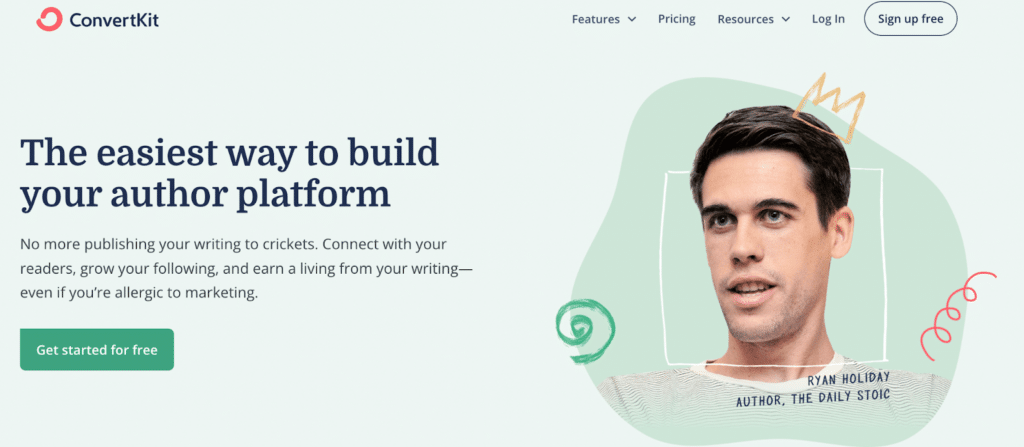
There are several different platforms out there so it can be intimidating to pick one.
If you pick a platform you’re not stuck with it forever, but it does take a bit of work to get switched over to a new one.
The main factors that you should take into consideration when picking a platform are:
- Price of the platform & price per subscriber
- Email building technology User interface
- Segmentation and integrations
Booklinker goes more in-depth on how to pick the best email marketing service for authors in another article, but for a quick answer, our favorite options are AuthorEmail, ConvertKit, and Mailerlite.
Start Capturing Emails
Now that you understand the value of email marketing, and have picked a platform, it’s now time to start capturing emails.
Capturing emails is all about tactics and strategy.
Tip!
- Tactics change all of the time, but strategy always stays the same.
The #1 strategy for gaining email subscribers is engagement.
Engagement is going to look different for all authors and platforms, but it all comes down to providing value to your target audience.
It takes a lot of time to study, understand, and create content for each marketing channel, so it’s best to master one and start capturing emails there before moving to another.
The best place for your optin is going to vary per marketing channel.
If social media is how you’re engaging your audience, then consider putting a Geniuslink or LinkTree pointing to your email opt-in page.
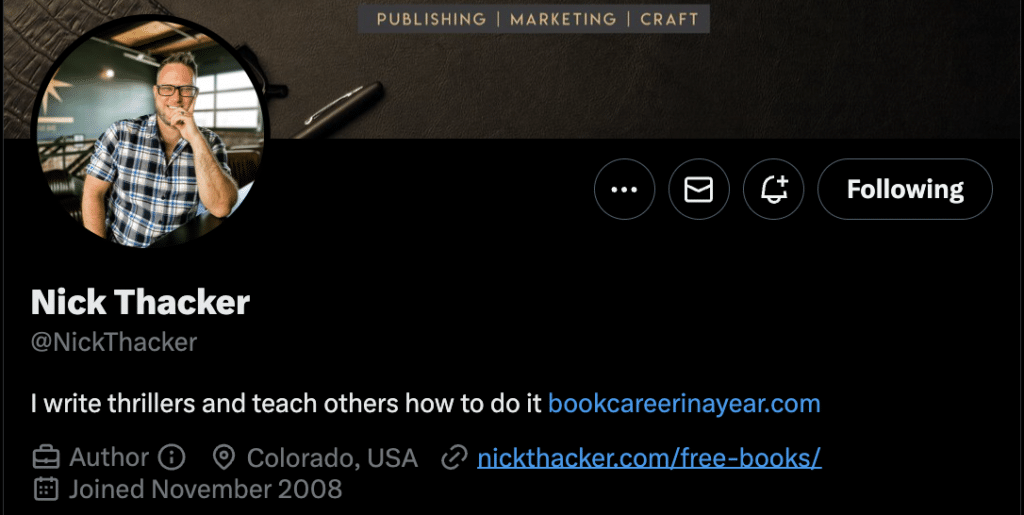
If you’re on Youtube, then the description or CTA buttons make great choices for a link.
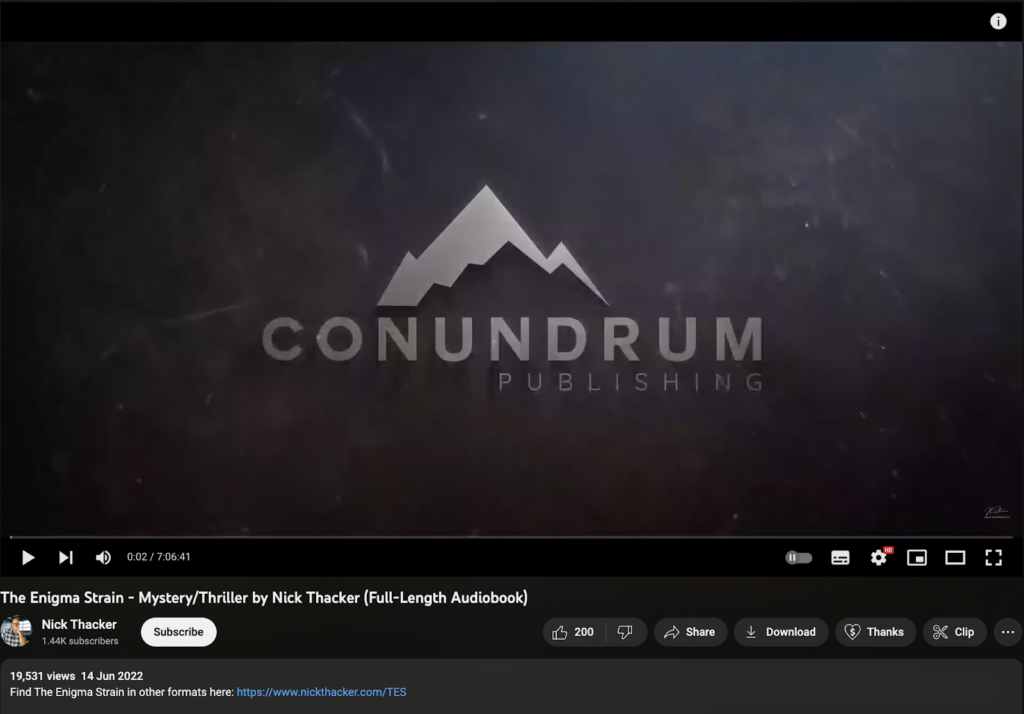
Many platforms also provide landing page-building tools for you to build beautiful high converting landing pages for you to send traffic.
Some platforms (like AuthorEmail) offer a simple, customizable form that can be easily altered to match your site and brand.
Lead Magnets
Unless your audience is extremely interested in what you have to offer, it’s going to take a bit more encouragement to get that email address.
Hoping that just because your fans love you, they’ll give you their email address is wishful thinking.
This is where the idea of a “lead magnet” comes in.
A lead magnet is a form of value-add that readers receive in exchange for their email address. This is typically some sort of digital download, but could really be anything.
As time has gone on, the quality of that “free thing” readers expect has risen and become more and more valuable.
If every author is giving away a free chapter, you may need to go a step above them.
I’ve gone as far as giving away full-length books in exchange for an email.
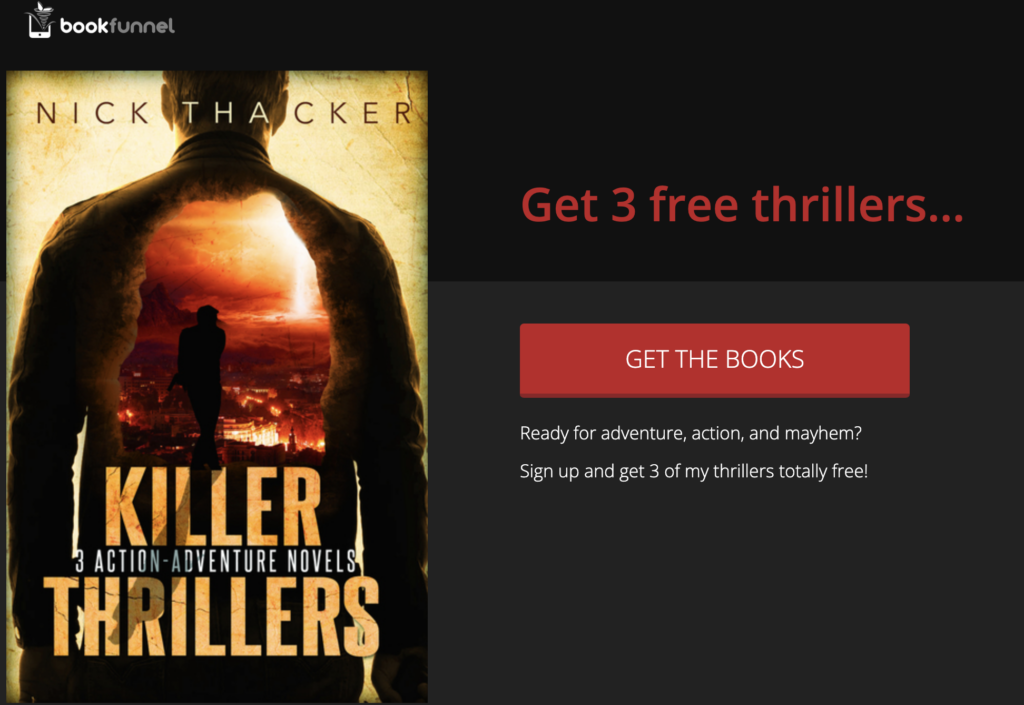
Think about the negligible cost to give out your book, in exchange for an email address that you wouldn’t have gotten otherwise.
Tip!
- Make your freebie so over the top that they just can’t say no to it.
Rachel Thompson from BadRedHeadMedia is very active on all social media channels and has an incredible blog.
In all of her blog posts, she has a section as follows:
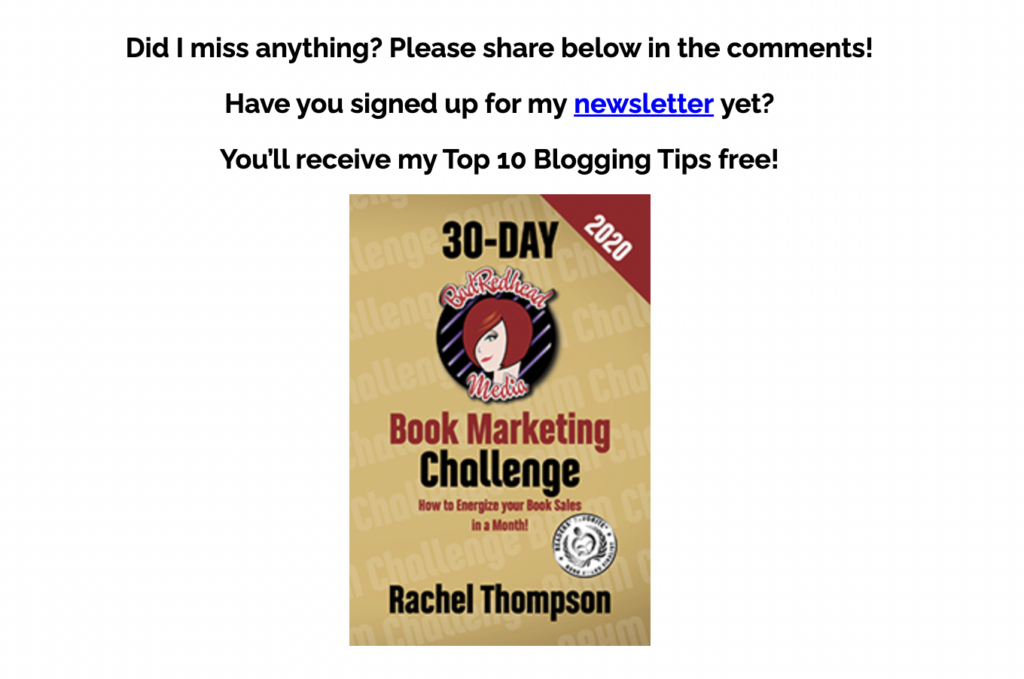
In this case, she’s giving away a PDF of her top ten blogging tips for authors. Something that many authors will find helpful, especially if they are coming from her blog.
Email Marketing Metrics
Next, I’ll cover the basic metrics of email marketing.
The main metrics you’re going to to look at here are:
- Open Rate
- Click Through Rate
- Conversion Rate
Your Email Service Providers will share these stats with you. Once you understand these metrics, you can start tinkering with A/B testing the respective elements that will affect them.
Before we go in-depth on how to increase all of these metrics, the most powerful way to get the most out of your email marketing is going to be audience trust.
If your audience doesn’t know who you are or doesn’t trust you, it doesn’t matter how good you are at everything else.
Open Rate
Open rate is the metric that describes the percentage of recipients that open your email.
The main ways that you can increase this percentage are with a strong subject line and the pretext.

The subject line is going to affect open rates the most. Make this as “clickbaity” as possible without losing the trust of your audience. Omnisend is a tool I recommend to test subject lines.
You can also mess around with the pretext field, which gives a snapshot preview of the contents of the email. You shouldn’t always set this to be the first line of your email.
However, depending on the email client this may or may not appear as intended, so it’s best to focus on the subject line.
Click Through Rate
The click-through rate is a metric measuring the percentage of recipients who click through your email to the desired location.
In the case that you’re promoting your book, a measure of the click-through rate would be how many people make it to your sales page.
Emails follow a similar pattern to web content in that one page should have one goal.
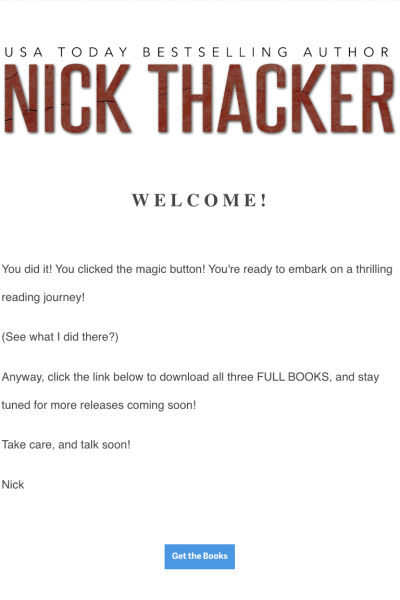
Don’t insert tons of different links to different destinations in your email.
One button does the trick or even just a link!
It doesn’t have to be complicated — actually, simplicity goes a long way in email marketing, as you want to make sure your emails will be seen the same way (parsed) by every inbox they land in.
In order to affect the click-through rates, this is all going to come down to your copywriting skills.
I can’t fit a copywriting guide into this post, but the following tactics will help you increase this:
- Personalized fields (First name, website name, etc)
- Segmented emails (Different emails to different customer profile types)
- Less is more (Every email should only have one potential action)
Examples of some calls to action that Nick has used are:
1. “Check out the book here: [LINK]”
2. “Stay up to date by following me: [LINK]”
3. “Let me know what you think by hitting “reply” on this email!”
Conversion Rate
Last, but certainly not least, is the conversion rate, which measures the percentage of recipients who make their way through the entire funnel, taking the desired action.
Following the same example above, a measure of conversion rate would be the percentage of people on your email list who purchase the book.
Tip!
- When it comes to an email conversion rate, the main things that will affect this are the landing page and the offer itself.
Consider using Booklinker or Geniuslink in order to create beautiful high converting landing pages for your books, that include all the online bookstores you’ve placed your book on, as well as universal book links that work in every single country.
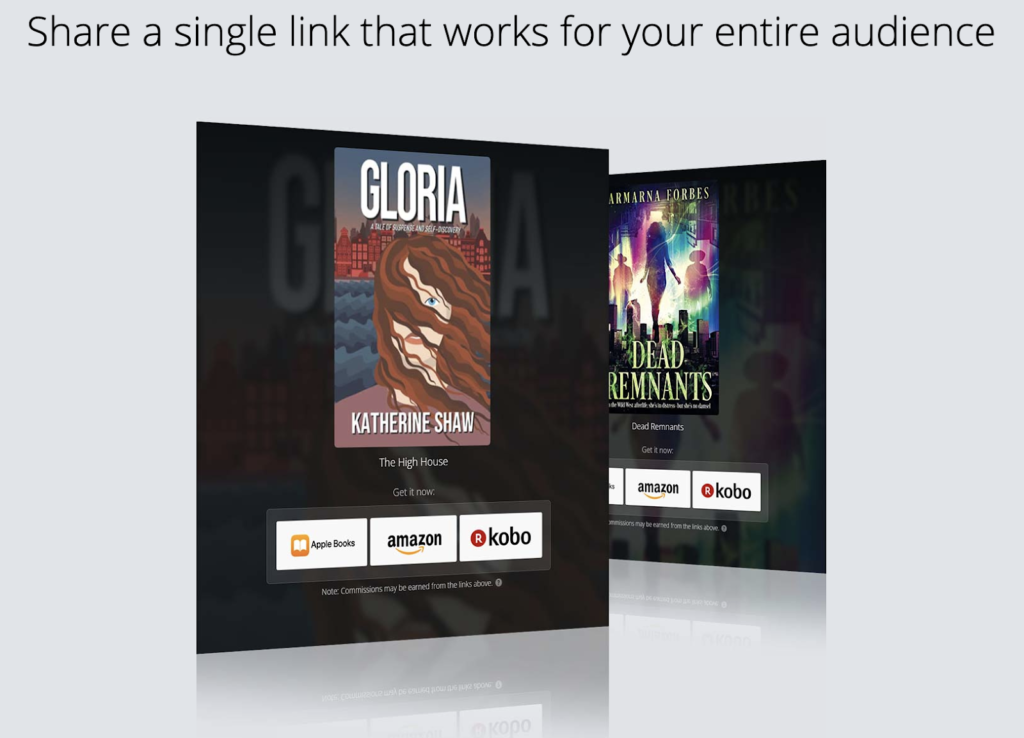
Assuming you’re selling a book, the landing page will likely be an Amazon product page, so you’ll want to optimize this as much as possible.
Elements such as the book cover, book title, and book description are great places to start.
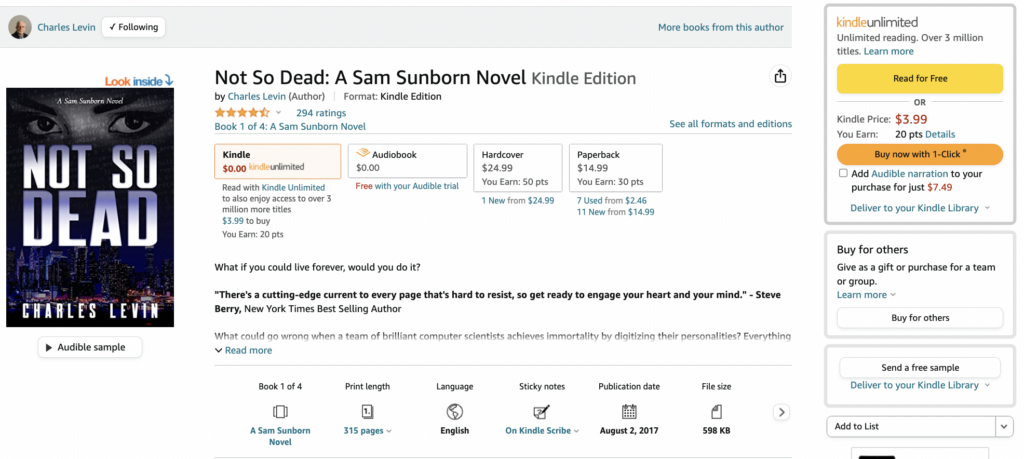
The offer is basically the quality of your book and its price. If you’re selling a book for $1 vs $100, the conversion rate is going to be different.
What to Send to Your List
The next part of email marketing authors get caught up on is not knowing what type of content to send to your list.
Think about what content you’d like to see as a fan of your favorite author and send that.
Don’t be afraid to ask your readers what they want to see from you.
I recommend starting with yourself, and focus on building a relationship before any sales emails. Readers want to know who you are as an author.
I love hockey and the Colorado Avalanche, so I send emails about that to my list.
Are my reader’s hockey fans, let alone Avalanche fans?
Probably not.
But they can sense my passion and excitement about the topic and will build a closer bond with me through it.
A general rule to follow is that your emails should be 80% relationship-building and 20% sales.
This way you’re delivering value a majority of the time but still providing opportunities to convert your audience into sales.
Types of Email Campaigns
The two main types of emails you can send to your list are automated sequences and one-off campaigns.
Automations/Sequences
Sequences are an automated email series that you set up beforehand so that when somebody enters your list, they receive them based on the conditions you set.
Here are my first five automated emails (my autoresponder sequence). Each is triggered a certain number of days after the last, ongoing.

Tip!
- Welcome sequences are one of the most powerful tools authors have to engage with their audience and sell more books..
The best part about a welcome sequence is that it is sent out asynchronously from your time.
The longer the series is, the longer you will stay top of mind to your readers for sales emails.
The worst thing that can happen is emailing a subscriber for the first time two months after they’ve subscribed, not knowing who you are, and instantly unsubscribing.
AuthorEmail has found that people are more likely to just delete an email you send than they are to unsubscribe.
Don’t be afraid to send more often — it helps to keep your brand and books in their mind. They subscribed because they want to hear from you!
Newsletters
While newsletters can technically fall under the category of automations, I wanted to mention them separately as they can be a core part of an authors marketing strategy.
Newsletters are emails sent out typically at a standard cadence, typically weekly or monthly.
For example, Booklinker has a newsletter that gets delivered monthly, sharing all the valuable author education articles they put up on the blog.
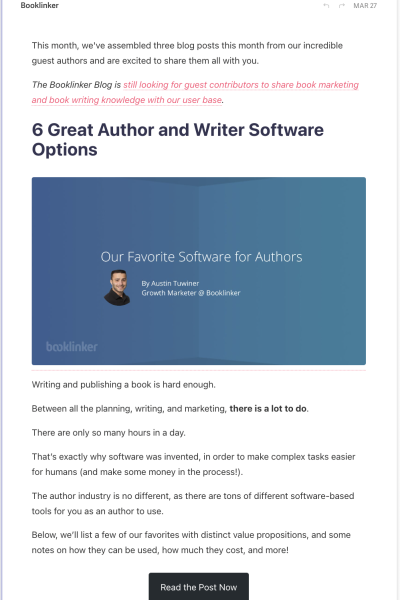
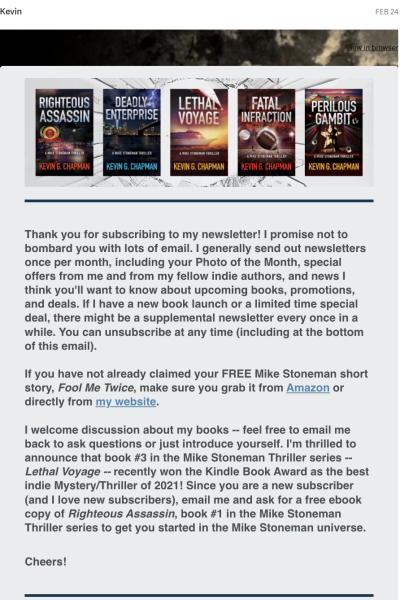
Newsletters are a great way to keep you and your books fresh in your fans mind while providing value.
One Off Campaign
In addition to sequences, you also have the ability to fire off an email at a given time to your list.
These types of campaigns are best for promotions or content ideas that come up on short notice.
If you’re trying to share something about your day with your audience, inserting that into automation to be sent off 10 days after joining a list won’t make too much sense.
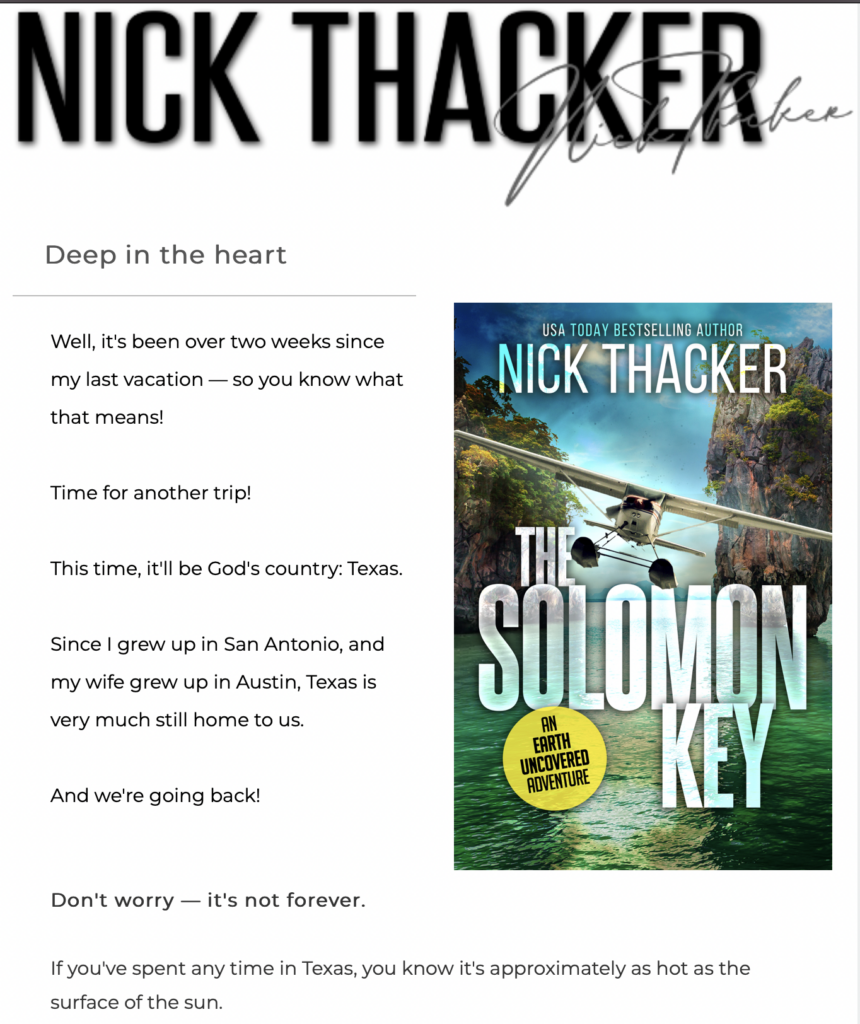
Instead, use a one-off campaign to send it instantly. You can view a full example of one of Nick Thacker one-off campaigns here.
Email Marketing Tactics to Help Authors Grow Their List
Repurpose Content
A great tactic to leverage when figuring out what type of content to send to your list is to repurpose existing content.
- If you just appeared on a podcast, transcribe a valuable piece of it in text form to send to your list.
- If you put out a tweet about something that just happened to you, mention it in your next email.
Tip!
- The content inside of your emails doesn’t have to be that much different than other marketing channels, it will just take on a different form.
Personalize Your Emails, Use Variables
Many email marketing services give you the ability to send emails with custom variables.
For example, you could start an email with:
“Hey {{first_name}},”
Assuming that you collected the first name from your subscriber.
This typically occurs during the optin.
The fewer fields a prospect needs to fill out, the more likely they are to complete the form.
Stick to just asking for 1-3 fields in addition to their email address.
A/B Testing Subject Lines
This is a more advanced tactic that isn’t recommended until your list hits a much larger size, but I wanted to share it anyway.
As I stated above, the subject line will have the greatest effect on open rates. It doesn’t matter how awesome your email is if it’s never opened.
Identifying the subject line with the highest open rate is in your best interest.
Most email marketing platforms provide the ability to run A/B tests on certain email elements in order to find out the highest-performing variants. Testing subject lines is a great place to start.
Conclusion
There is never really a bad time to start your email list. As soon as you start building an audience around something, you can begin capturing emails.
You’ll just need to pick an email marketing service provider and put up a basic landing page where fans can enter their information.
As time goes on, adding a lead magnet to incentivize signups and an automation sequence to nurture leads is going to be your best bet.
Stick with it, and you’ll have one of the most lucrative book marketing channels at your disposal.
If you have any questions for Nick Thacker or the Booklinker team, be sure to drop a comment for us and we’ll get back to you promptly.

Introducing:
Booklinker Collections
One landing page for all your books. 100% free.
One link for easy sharing of your books across your backmatter, websites, emails, and social media.
Author
-
Nick Thacker is a USA Today Bestselling author of thriller and action-adventure novels, and the founder and lead of Conundrum Publishing, a company designed for one thing: selling thrillers. Nick has also founded and sold businesses, including Author.Email, the only email marketing service exclusively for authors, and RadioWrite, the 24/7 news and music station designed for authors. He lives in Colorado and Hawaii, and writes in breweries worldwide. Stay up-to-date with his curated author marketing weekly newsletter, ThackStack.
https://www.nickthacker.com



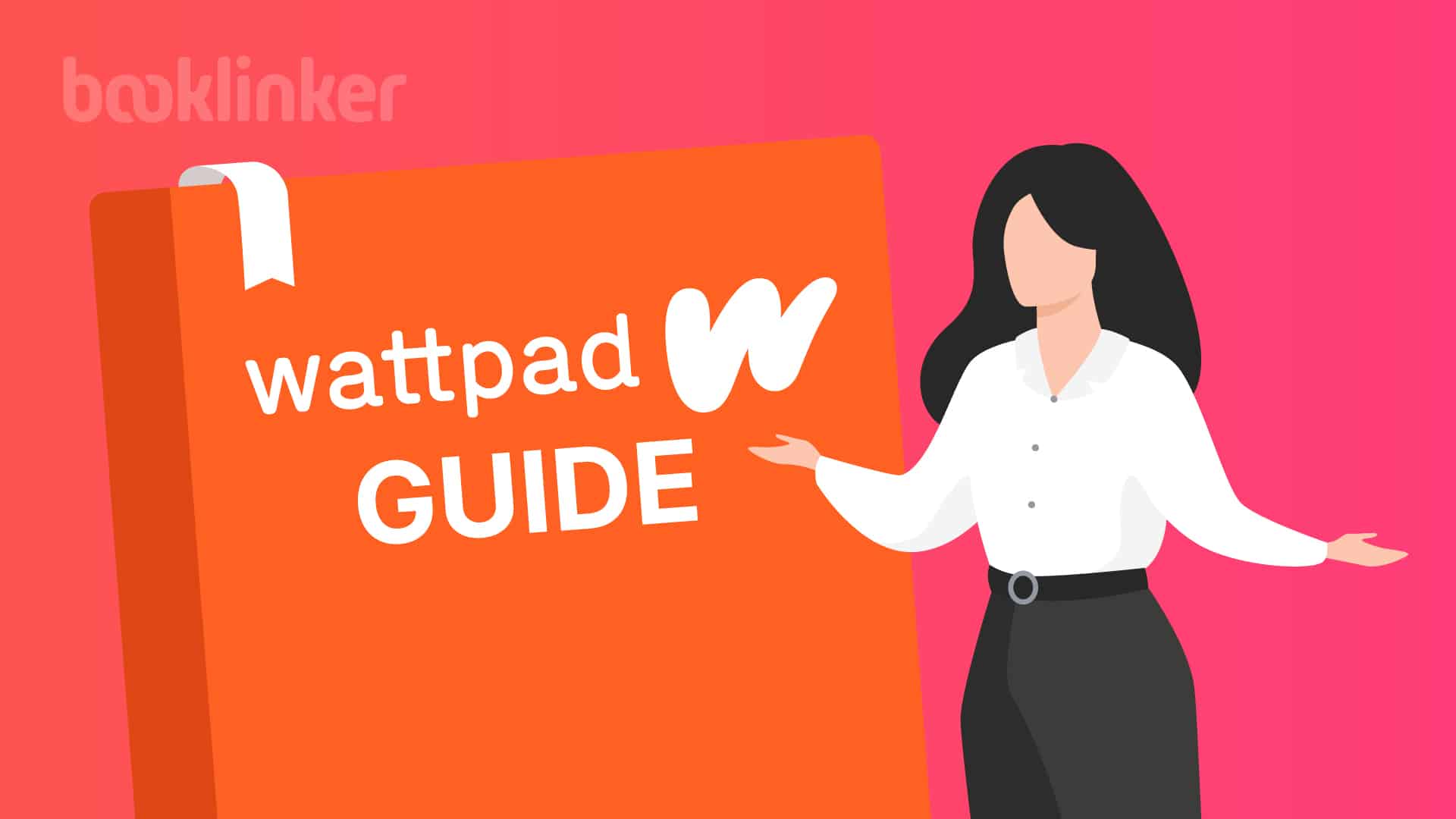
One Response
This is an insightful and well-structured guide on email marketing for authors! Nick Thacker does a great job explaining why an email list is essential and how to effectively build and utilize one. A must-read for any indie author looking to turn subscribers into loyal superfans!